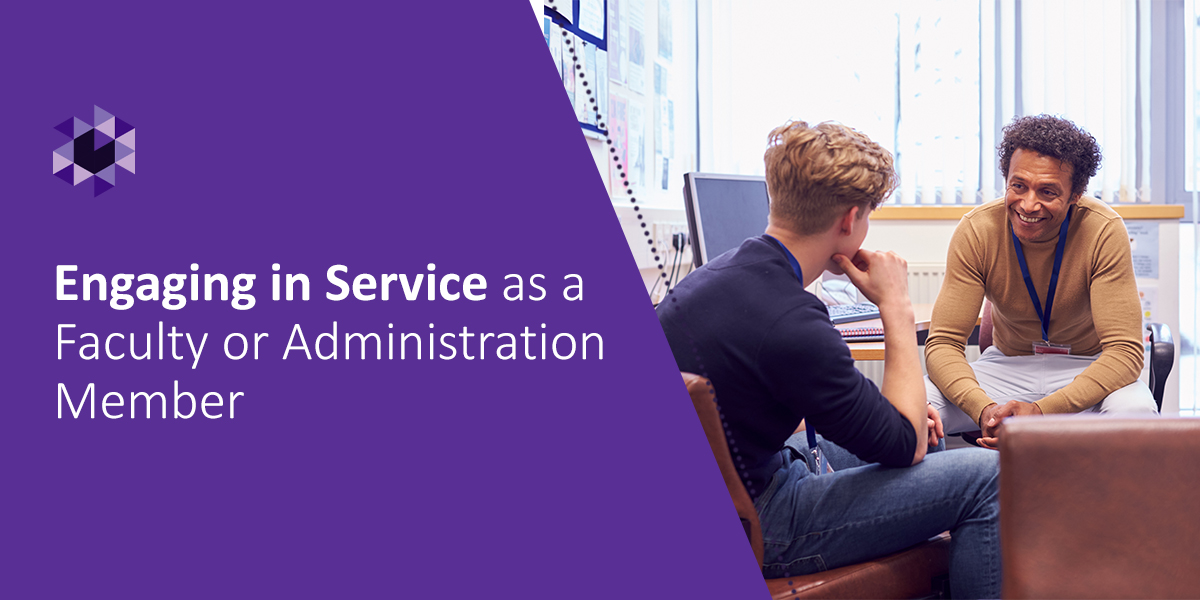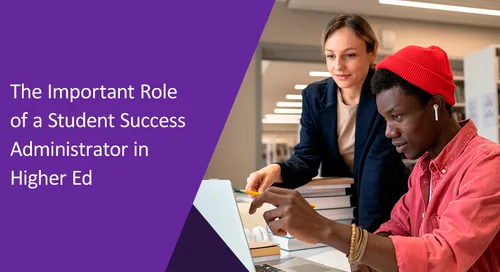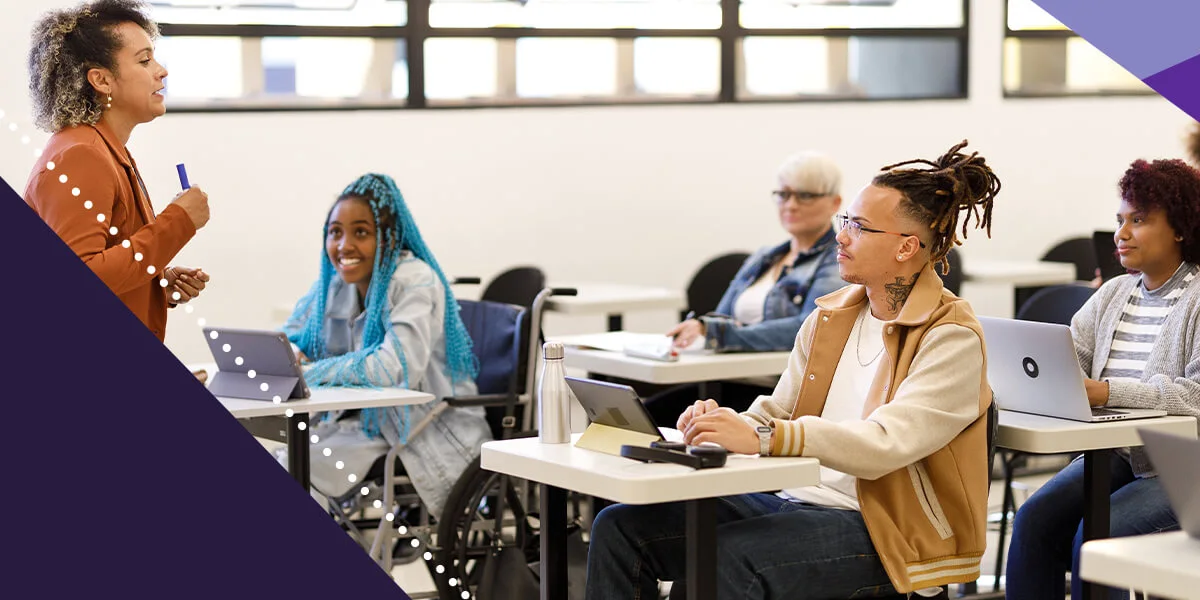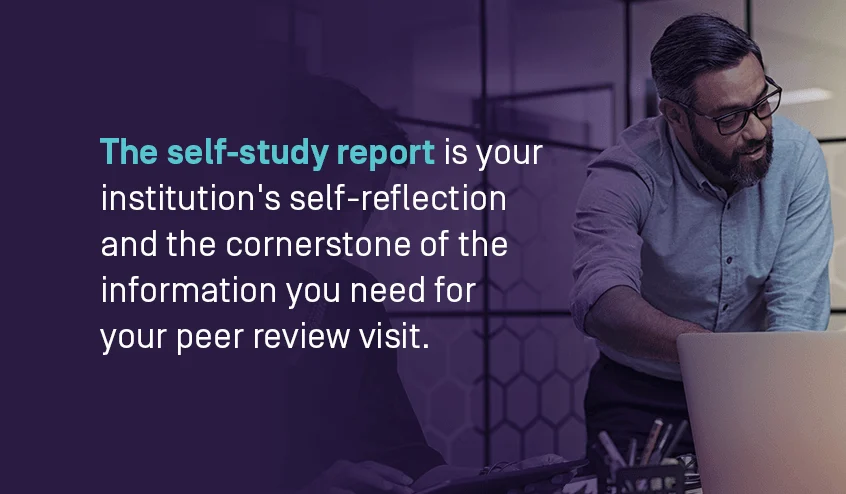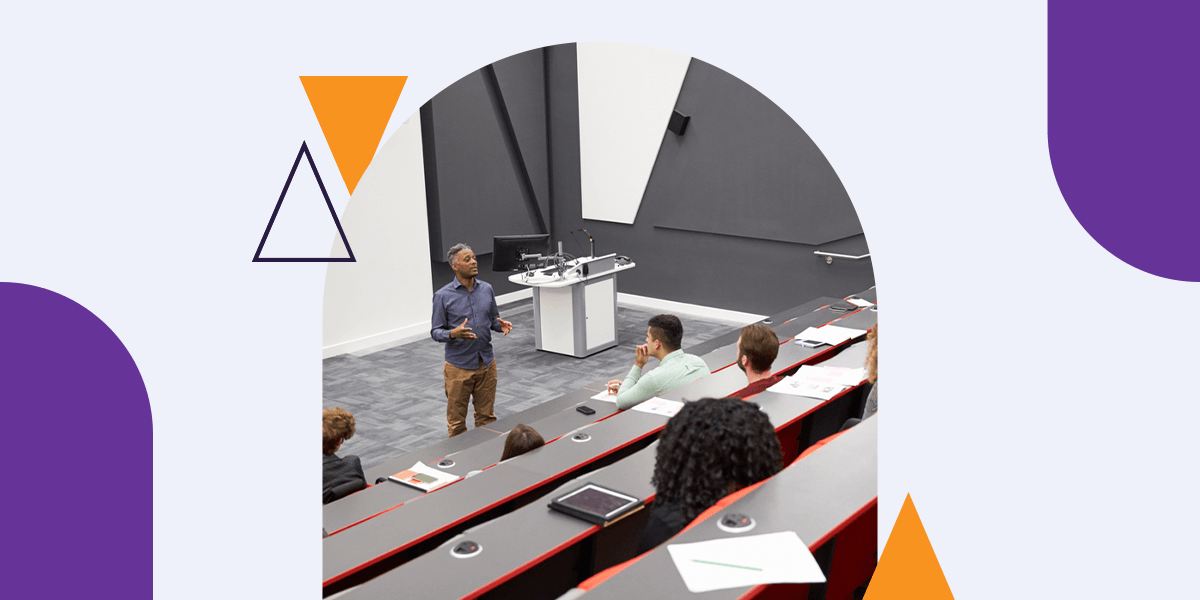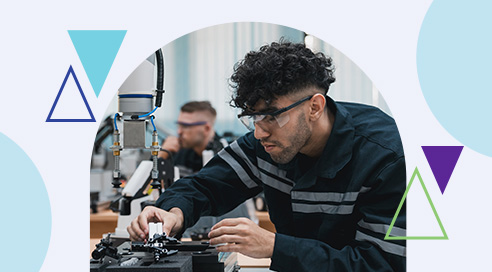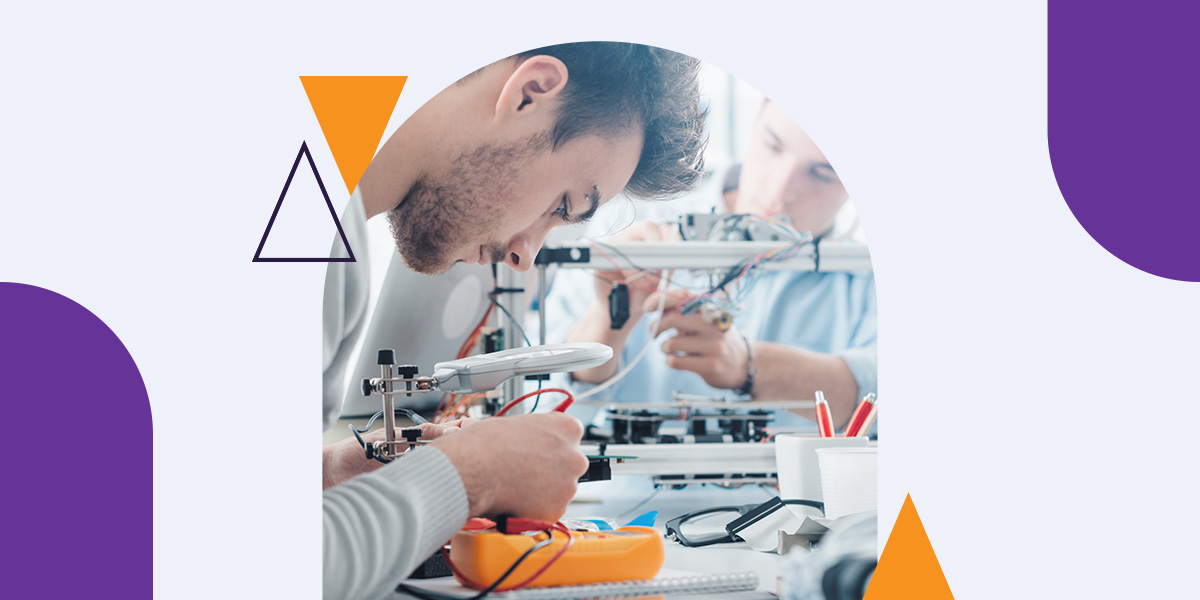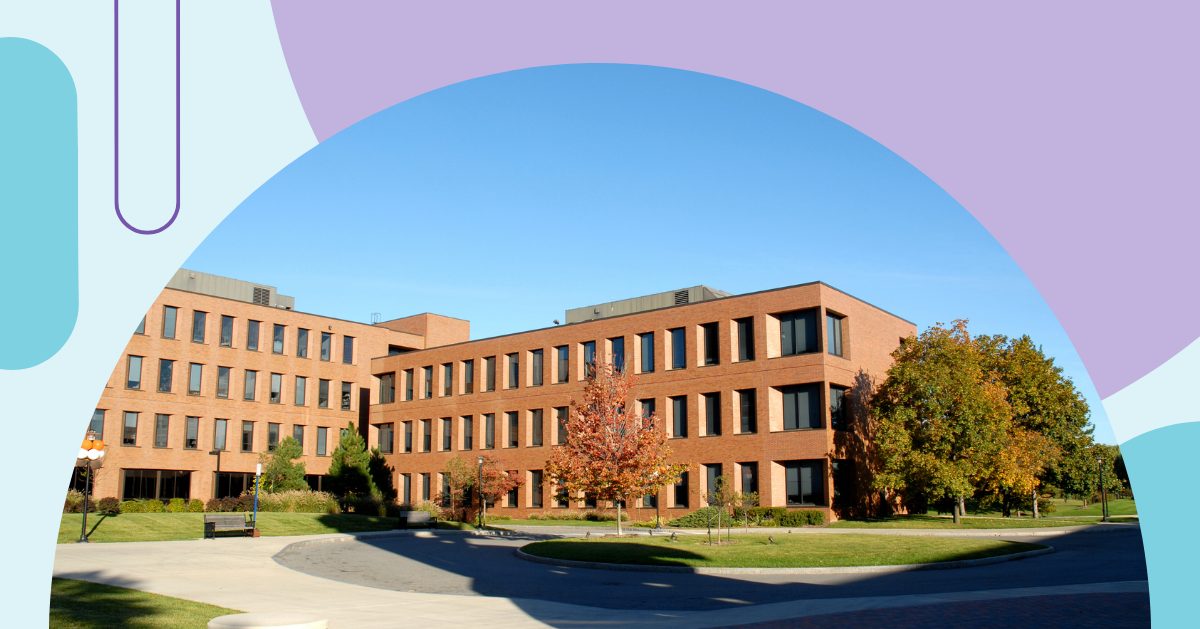
Higher education technology evolves with each academic year. Though keeping pace with innovation can be challenging, institutions that leverage the latest advances enjoy enhanced student success and administrative efficiency. The key is anticipating the technologies that can help achieve your institutional goals and creating strategic plans to adopt them.
If your institution values cutting-edge technologies as tools for success, read on to discover the 15 edtech trends that will gain prominence in the upcoming school year. You’ll learn how to incorporate these tools to improve results across your institution.
Why keeping pace with edtech trends matters
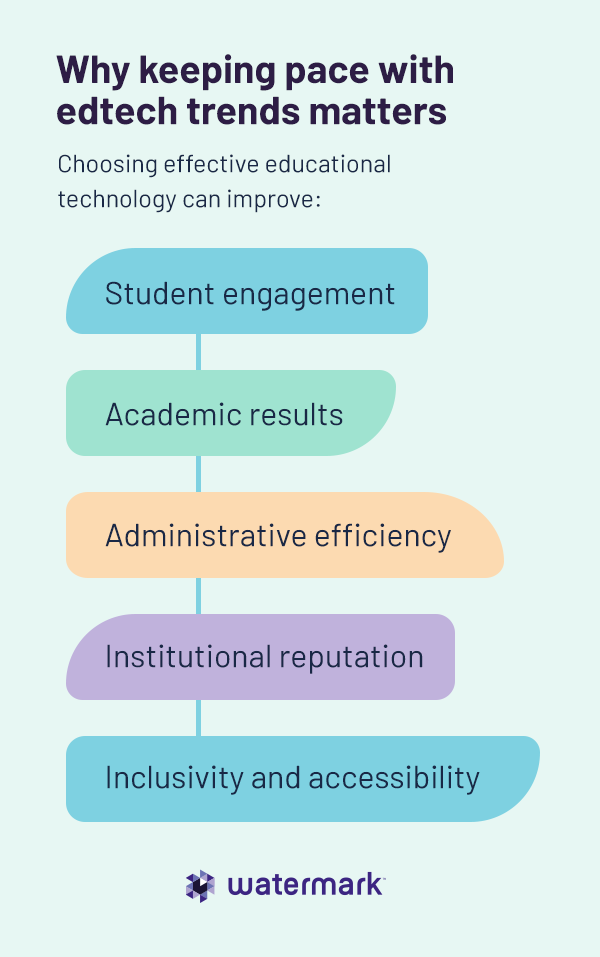
Educational technologies are tools to advance your institutional priorities. The best reason to adopt any technological tool or software solution at your institution is that it aligns with these priorities. Choosing effective educational technology can improve:
- Student engagement: Incorporating the latest tech into the classroom experience can help maintain interest. Some technologies, like gamified learning applications, excel at promoting student engagement. Studies show that edtech impacts student attitudes toward learning positively while increasing their mental effort and time investments in studying.
- Academic results: Educational technologies can promote critical thinking, communication, collaboration, problem-solving, and digital competencies. Research reveals that technologically enhanced learning experiences help students outperform peers in classes with traditional analog learning approaches. Assignments, research papers, and exam scores all reflect this advantage. The improved academic outcomes likely result from enhanced engagement.
- Administrative efficiency: Adopting educational technologies can streamline many administrative and pedagogical functions. These include grading, student surveys, reporting, accreditation self-studies, and faculty evaluations. Improving efficiency in these areas can enhance productivity throughout your institution.
- Institutional reputation: Implementing cutting-edge technologies can establish a reputation for your institution as one at the forefront of educational innovation. This can form part of a powerful branding strategy to attract students and offset the projected enrollment cliff’s impact over the coming years. Your forward-looking reputation can also help build partnerships with industry leaders.
- Inclusivity and accessibility: Educational technologies can adapt the learning experience to suit diverse abilities, needs, and personalities. From screen readers and speech-to-text software to adaptive progress pathways, edtech advances are giving more students equitable opportunities for success.
15 Edtech trends to watch in 2025
As your institution prepares for the 2025 academic year, the technologies you embrace could help maximize your potential for success. Keep your eyes on these 15 trends in edtech and consider how you could leverage them to realize your strategic objectives for the year.
1. Personalized and adaptive learning
The diversity of student learning styles, competencies, and interests has driven innovation in adaptive teaching tools and methods. Personalized learning experiences allow students to pursue learning pathways optimized for them. This can involve:
- Letting students progress through modules at their own pace.
- Providing additional practice opportunities for concepts a student finds more challenging.
- Tailored learning resources to accommodate preferred learning styles, including visual, auditory, and kinesthetic learners.
- Offering multiple options for assignments and test questions so students can choose how to demonstrate their competence.
Innovative learning applications are using artificial intelligence (AI) to automate learning pathway personalization. This creates an adaptive learning experience without demanding additional time investments from teachers to customize their instruction for each student.
2. Self-driven education
Self-driven or self-directed education takes the personalization principle and combines it with a commitment to empowering student autonomy. This approach prepares students to enter fast-paced digital workplaces where initiative and decision-making skills are vital. Students can own their roles as the catalysts of their learning journeys when they:
- Use apps and learning platforms to customize progress pathways and access resources.
- Set personalized learning objectives within the framework of their program.
- Conduct independent research into curriculum topics by using search engines.
- Evaluate their progress with self-assessment tools and reflection journals.
- Form groups for collaborative projects to practice teamwork and leadership.
3. Social-emotional learning
Social-emotional learning (SEL) prioritizes student well-being and holistic self-formation through learning. As mental health awareness grows in higher education communities, expect to see more emphasis on digital learning experiences that cultivate empathy, resilience, communication, and self-worth. Technological approaches to social-emotional learning include:
- Digital journaling to record experiences and feelings throughout the learning journey.
- Collaborative workspaces for communication during group projects.
- Virtual counseling and mental health services through a telehealth program.
- Peer-support networks with virtual and in-person meetings.
- Student communities on social media platforms.
- Interactive scenario-based learning to practice soft skills in extended reality spaces.
- Online interpersonal skills workshops on communication, teamwork, and conflict resolution.
4. Microlearning and nanolearning
Generation Z students prefer interacting with bite-sized content in their free time. Microlearning accepts and leverages that preference in the classroom for academic success. Brief lesson components avoid overtaxing attention spans and reward students with quick wins as they learn. This can enhance student motivation and engagement.
Your teaching faculty can also explore even shorter nanolearning segments, which last from a few seconds to five minutes. Microlearning and nanolearning are compatible with adaptive and self-driven learning systems, as the smaller content units leave more room for customization. It also aligns well with edutainment material, supporting comprehension with captivating minigames, informative vertical videos, and virtual adventures.
5. Hybrid and remote learning environments
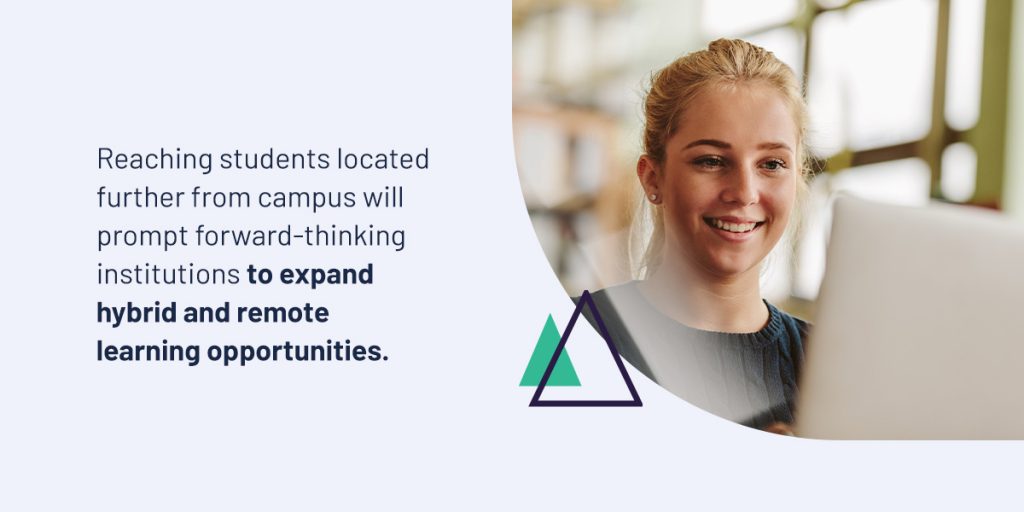
As institutions seek to maintain or grow their enrollment numbers, reaching students located further from campus or those with family and work commitments is a vital strategy. This will prompt forward-thinking institutions to expand hybrid and remote learning opportunities. As educational technologies make digital touchpoints more interactive and enriching, these alternative learning modes are becoming more compatible with collaboration and interpersonal skill development.
Key edtech tools for effective remote learning include:
- Asynchronous content delivery through recorded lectures.
- Interactive extended reality simulations and educational mobile games.
- Enhanced learning management systems (LMSs) with course materials and tasks.
- Video conferencing platforms and other collaborative workspaces.
- AI chatbot tutors for real-time academic assistance.
- Digital translation functions for non-native English speakers.
6. Immersive learning
Immersive learning through extended reality (XR) technologies will continue to gain ground. These engaging simulation tools allow remote learners to meet in a virtual space and collaborate. They also empower teaching faculty to take their on-site classes on interactive simulated field trips without the hazards and expenses of leaving the class. XR tools include applications, headsets, and controllers. Specialized versions of these tools can unlock three main types of XR for students:
- Augmented reality (AR): AR enhances the physical world with simulated elements. Students can view these physical and virtual environments simultaneously while interacting with physical objects. For example, medical students could view a 3D simulation of the kidneys while reading a nephrology chapter in their textbook.
- Virtual reality (VR): VR devices replace a student’s perception of their physical scenery with a virtual environment, allowing them to engage fully with the simulation. Using VR tools, a medical class could take an interactive field trip through the inside of a scaled-up kidney simulation.
- Mixed reality (MR): MR takes AR a step further by enabling interaction with and manipulation of the simulated objects it adds to the physical environment. MR would allow the med students to dissect and interact with the simulated kidney, whereas AR would only support visualizing it.
7. Analytics and data-driven education
Each year, higher education software enhances our capabilities for collecting, analyzing, and applying data points. Teaching faculty can now automate this entire data cycle, freeing them up to invest their time in the most impactful areas for student success.
For example, student success software can collect course data from your LMS, apply predictive analytics to identify students needing additional support, and trigger adaptive learning tools to adjust the student’s learning pathway. Meanwhile, teaching faculty receive alerts flagging students who need early intervention to support persistence. This data-driven approach helps improve student engagement, retention, and results.
8. Generative artificial intelligence
As generative artificial intelligence becomes more reliable and gains new functions, its applications in higher ed expand. GenAI’s contributions in 2025 will include:
- Formulating and grading assessment questions.
- Generating constructive feedback on assignments.
- Powering adaptive learning pathways.
- Creating lesson plans.
- Personalizing material to student learning styles.
- Translating content for non-native English speakers.
- Drafting and sending class announcements.
- Tutoring students through responsive chatbots.
- Summarizing and analyzing student data for educators.
- Crafting research topic summaries.
9. Cloud-based learning platforms
Cloud-based platforms allow teaching faculty and students to collaborate and access resources in a shared digital space. Session participants on a cloud-based platform can share text and media, discuss ideas, and interact with content in real time. These tools are especially useful in remote, hybrid, and project-based learning contexts. Cloud-based software tools tend to be cost-effective and scalable across an entire institution.
10. Competency-based education
As theoretical knowledge becomes more accessible to curious minds outside the formal classroom, higher education institutions must focus on skill mastery to stay relevant. Competency-based education emphasizes proficiency in sought-after skills over time spent in class — these include job-specific hard skills as well as soft skills.
As workplaces become more technologically advanced, technology’s role in competency-based education expands. For example, a competency-based approach to a module on computer-aided design (CAD) would guide students through a series of practical challenges they could complete at their own pace. This would culminate in the student using engineering software to create a functional CAD model that meets assessment criteria.
11. Gamified learning
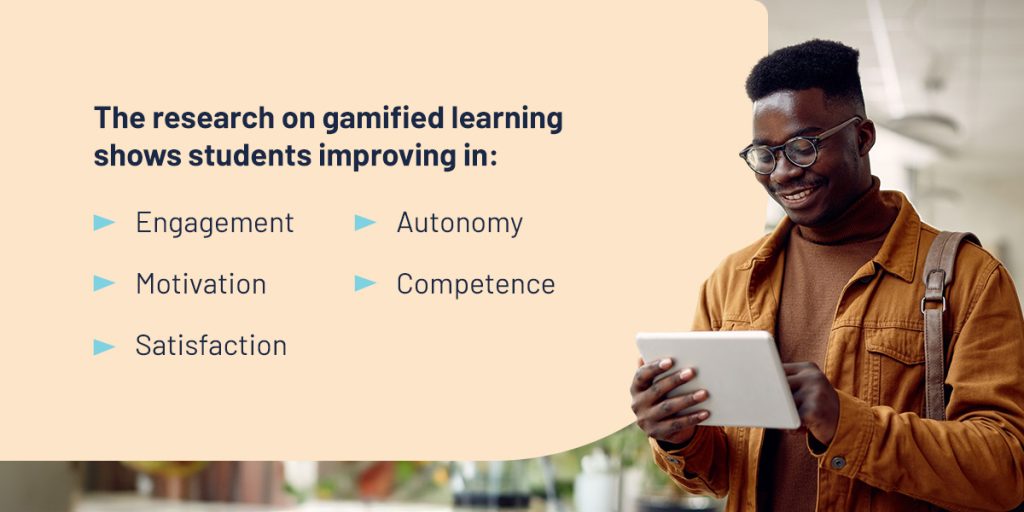
Gamified learning uses game elements like points, leaderboards, and badges to engage students. These elements help make learning fun and rewarding. They allow students to hone their problem-solving skills and key competencies while getting instant feedback on their decisions.
Students can access educational games through mobile apps, tablets, desktop and laptop computers, or even XR devices. The research on gamified learning shows students improving in:
- Engagement
- Motivation
- Satisfaction
- Autonomy
- Competence
12. Industry partnerships
Seek out partnerships with innovative industry leaders. Cloud-based platforms, video conferencing applications, and extended reality tools can connect your students to global experts in the professions they aim to enter. These partners can:
- Expose your faculty to the latest technologies entering their workplaces.
- Propose ways to incorporate industry technologies and practices into your curriculum.
- Guide extended reality tours of work facilities.
- Host student interns as they practice using these tools in a real work context.
13. 3D printing for practical learning
3D printing technology is a powerful tool for bringing concepts to life. It’s especially useful in design and engineering fields, as students can create physical models of their designs to interact with and explore their functionality.
Teaching faculty can also leverage this technology to help their students visualize complex concepts. Beyond engineering and design, possibilities include:
- Creating anatomical models for study in fields like medicine and biology.
- Exploring artistic ideas through 3D-printed sculptures.
- Developing prototypes for business and technology classes.
14. Career and technical education
There is reduced confidence in higher ed due to the perception that it fails to teach relevant career-oriented skills. Overcoming this perception to attract more students will require leveraging edtech to develop work readiness. Ways to achieve this include:
- Supervised extended reality simulations of real work tasks.
- Engineering students can immerse themselves in life-size plans while drafting, gaining a new perspective on the structures they hope to build.
- Students studying sciences like chemistry, biology, or anatomy can participate in extended reality labs that would mimic real-world tasks they’d encounter as a career scientist.
- Put students’ practical skills to the test by simulating a common workplace error or emergency — without any real safety risk. How do the students use what they’ve learned to solve this problem?
- Group project-based learning through collaborative platforms.
Leveraging technology for career and technical education (CTE) can attract career-minded students, enhance graduate employability, and build your institution’s reputation among industry leaders.
15. Mobile-friendly learning interfaces
Online learning materials and even some assessments are accessible via smartphone. As these devices are constant fixtures in daily student life, expect strategic shifts toward more mobile-friendly content. Mobile-friendly learning will be most impactful for busy, non-traditional students with complex schedules. When program resources perform well on smartphones, these students gain the flexibility to learn anywhere, anytime. The content types well-suited to mobile learning are:
- Informative vertical videos
- Lecture material distributed in podcast form
- Educational games and apps
- Text, voice, or video-based group discussions
- Multiple choice quiz assessments
Create a cutting-edge student experience with Watermark
Higher education administrators measure the value of new technologies by their contribution to student success. Watermark Student Success & Engagement gives you data-driven insights to support students throughout their academic journey. This software solution helps you maximize student engagement, retention, and results by:
- Integrating with your LMS and SIS tools for seamless data collection.
- Detecting students needing support through predictive analytics so teaching faculty can intervene.
- Creating personalized learning pathways and monitoring progress toward self-driven learning goals.
- Empowering students to complete tasks, collaborate, and schedule support from our mobile app.
Try a free demo of Watermark Student Success & Engagement to learn more about this innovative solution for student success.














































































































